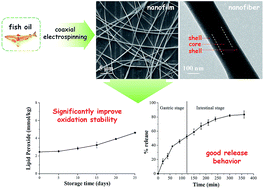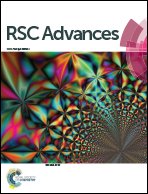Encapsulation of fish oil in a coaxial electrospun nanofibrous mat and its properties
Abstract
Coaxial electrospinning was firstly developed to encapsulate fish oil in composite nanofibers to improve its oxidative stability. TEM analysis revealed that a clear core–shell structure was formed in the obtained coaxial nanofibers, the average diameter of which was 560 nm. The loading capacity and encapsulation efficiency of fish oil were 14.5% and 96.9%, respectively. FTIR data demonstrated that fish oil was successfully entrapped into the coaxial electrospun nanofibers. The oxidative stability of encapsulated fish oil in the coaxial nanofibers was significantly enhanced compared to that in single nanofibers. Meanwhile, most of the encapsulated fish oil can be efficiently released from the coaxial electrospun nanofibers and the release was controlled by a combination of diffusion and macromolecular chain relaxation. This coaxial electrospun nanofibrous mat with favourable oxidative stability and release properties has potential for an application as a nutritional additive.



 Please wait while we load your content...
Please wait while we load your content...